
In September 2022 Oxbow's bookshop and distribution buisness merged with Pen & Sword Books, a family run independent publisher of history books. The book distribution aspect of our business will continue to bring you some of the best books in the field of archaeology and related disciplines as Casemate UK. The Oxbow Books publishing imprint remains as a separate entity, still sold and distributed exclusively by us.
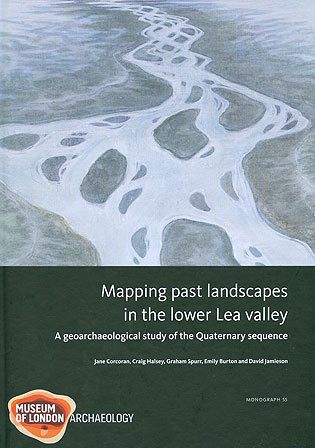
Format: Hardback
Pages: 208
ISBN: 9781907586019
Pub Date: 15 Apr 2011
Series: MoLAS Monograph
Description:
Archaeological evidence is enriched when it is viewed against the backdrop of its natural landscape setting. This setting is not readily apparent in the lower Lea valley, where evidence for the natural topography has been cut away by quarrying and reservoir construction or buried by metres of alluvium and modern made ground. The Lea Valley Mapping Project, funded by the Aggregates Levy Sustainability Fund, has taken a geoarchaeological approach to reconstructing the past landscape and its relationship to archaeological distributions by using existing borehole information to model the buried topography and past environment of the lower Lea valley from the M25 to the confluence of the Lea and the Thames.
The results place the known archaeology within its past landscape context and also predict the archaeological potential of the study area, which readers can investigate by referring both to the maps in the monograph and to the accompanying gazetteer. They can also download the interpreted geo-referenced datasets produced for the project from the ADS website. This book will be an indispensable guide not only for those wishing to know the archaeological potential and past landscape characteristics of the lower Lea valley but to anyone proposing to investigate the buried landscape in other river valleys or wanting an introduction to Quaternary deposits, environments and landscape processes in Greater London.

Format: Paperback
Pages: 102
ISBN: 9781842179963
Pub Date: 15 Apr 2011
Series: Well Built Mycenae
Illustrations: DVD
Description:
The post-palatial period - Late Helladic IIIC - is often seen as the twilight years of Mycenean civilisation, a period of economic decline with few achievements in terms of architecture, materials or technology. Excavation in the Citadel House area at Mycenae afforded unique opportunities to explore stratified remains of this period and to define and describe its character. In this fascicule, Dr.
Elizabeth French presents her full report on the remains of this period, which, sheltered within the massive 13th century BC walls, allow us to chart something of Mycenae's history in the final years of the Bronze Age. This fascicule also contains a unique account of LH IIIC pottery, stratum by stratum, incorporating a major study by Dr. Susan Sherratt, together with a wealth of illustration of pottery vessels. The account of the other objects of terracotta, metal, ivory, stone and bone helps us to better understand the cultural materials of the post-palatial period, while Gordon Hillman's account of the plant remains from the "Granary" is a significant addition to the palaeo-botanical record for the Mycenean period as a whole and one of very few for the LH IIIC period. This book, which includes a DVD containing all the data from previous fascicules and an interactive index, will be an essential reference tool for the study of the period.
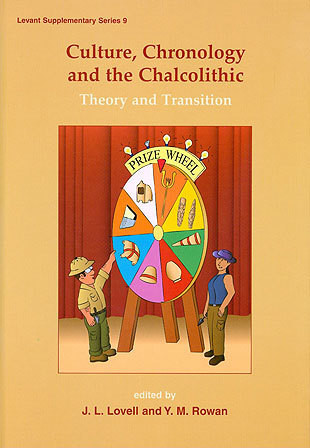
Format: Hardback
Pages: 208
ISBN: 9781842179932
Pub Date: 31 Mar 2011
Series: Levant Supplementary Series
Illustrations: 87 b/w & col illus
Description:
To some, the Chalcolithic (4700/4500-3700/3600 BC cal.), as the first period with metallurgy, large sprawling villages, rich mortuary offerings, and cult centres, represents a developmental stage on the road to the urban Bronze Age, the "dawn of history". Others have called it 'the end of prehistory'.
More recent scholarship focuses upon the diversification of the subsistence economy, elaborated craft production, and expanded networks for resource acquisition. Many of today's Chalcolithic specialists were taught by biblical archaeologists, such that the culture history paradigm remains deeply embedded. This volume grew out of a workshop held in Madrid in 2006 and aims to kick start a dialogue about how to move beyond culture history and chronology in order to re-engage with larger theoretical discourses. A vast swathe of research in the region ignores these issues and considers theory to be irrelevant. One has the impression that the political realities of the region (including a predilection for biblical archaeology) has left a large proportion of archaeologists in the region, including prehistorians, lost without a map. Contributors to this volume recognize that culture history is the platform upon which current archaeological research is discussed but differ in the degree of emphasis placed on previously defined entities or phases. Delineating levels of difference and similarity between temporal boundaries is critical in this process. The two themes of this volume - culture and chronology - combine the need for theoretical engagement with the establishment of broader, more precise empirical data using explicit classificatory schemes. This is, essentially, the rock and the hard place where much archaeological debate is wedged, and as such the volume will have resonance for scholars of other periods and regions.

Format: Paperback
Pages: 208
ISBN: 9781842173763
Pub Date: 31 Mar 2011
Illustrations: 79 b/w illustrations and maps
Description:
This volume investigates the archaeology of death and commemoration through thematically linked case studies drawn from the Classical world. These investigations stress the processes of burial and commemoration as inherently social and designed for an audience, and they explore the meaning and importance attached to preserving memory. While previous investigations of Greek and Roman death and burial have tended to concentrate on period- or regionally-specific sets of data, this volume instead focuses on a series of topical connections that highlight important facets of death and commemoration significant to the larger Classical world.
Living through the dead investigates the subject of death and commemoration from a diverse set of archaeologically informed approaches, including visual reception, detailed analysis of excavated remains, landscape, and post-classical reflections and draws on artefactual, documentary and pictorial evidence. The nine papers present recent research by some of the leading voices on the subject, as well as some fresh perspectives. Case studies come from Thermopylae, the Bosporan kingdom, Athens, Republican Rome, Pompeii and Egypt. As a collected volume, they provide thematically linked investigations of key issues in ritual, memory and (self)presentation associated with death and burial in the Classical period. As such, this volume will be of particular interest to postgraduate students and academics with specialist interests in the archaeology of the Classical world and also more broadly, as a source of comparative material, to people working on issues related to the archaeology of death and commemoration.
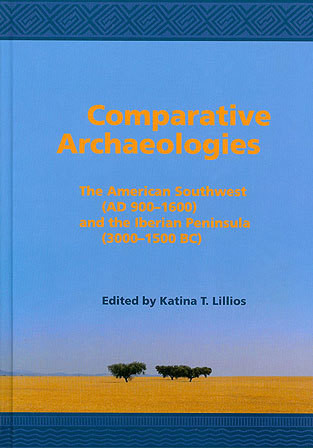
Format: Hardback
Pages: 312
ISBN: 9781935488262
Pub Date: 28 Mar 2011
Description:
Comparative Archaeologies scrutinises current thinking on the dynamics and historical trajectories of complex societies in the American Southwest (AD 900-1600) and the Iberian Peninsula (3000-1500 BC) through a focused comparison of five themes: Histories, Landscapes, Bodies, Gender, and Art. Leading archaeologists from North America and Europe - drawing on diverse intellectual traditions - engage in this innovative form of comparative archaeology which recognizes both the historicities of past societies of similar forms and the social embeddedness of archaeological practice and theory.

Format: Paperback
Pages: 176
ISBN: 9781905119370
Pub Date: 15 Mar 2011
Illustrations: col & b/w illus 176p, colour & b/w illus
Description:
The Manchester Botanical and Horticultural Society was founded in 1827 to allow members the opportunity to study botany and horticulture and to create an ambience "not unlike a fashionable resort". Today the Garden is all but forgotten and only the former entrance gates and a street name remain. This book, illustrated with many contemporary engravings and postcards, charts the history of the Garden; its international reputation in horticultural developments and many floral triumphs; its recurrent financial crises and ultimate degeneration into a venue for cat and dog shows and final conversion to a doomed amusement park.
Ann Brooks studied Pharmacy at Manchester University followed by a varied career in hospital pharmacy. Her great love of gardening and the history of the gardening movement led her to return to academia and she completed a PhD in 2007 on The Manchester Botanic Garden and the Movement for Subscription Botanic Gardens. She is the co-author of a number of papers on the history of Manchester and is currently writing a book on the movement for subscription botanic gardens and conducting research on Victorian villa gardens.

Format: Paperback
Pages: 104
ISBN: 9781842174173
Pub Date: 14 Mar 2011
Description:
This volume examines conceptions, ideas and habits connected with children in Antiquity and the Middle Ages, focusing on the "dark sides of childhood" in the pre-modern world. The authors investigate the long-term attitudes of people, as well as ruptures in habits and customs. The book is divided into three parts.
"Unwanted" deals with parents who were unable to bring up their baby and handed it over to other people or the cruel whims of destiny. "Disabled" addresses what we would label as children's illnesses since disability was a concept largely unknown to ancient people. "Nearly Lost" examines demons, viewed as destructive forces with the ability to destroy children or young people, sometimes by literally sucking their lives away. The articles are written by an international team of specialists from Belgium, Finland, Italy and the United States and were presented at conferences organised by the research project "Religion and Childhood. Socialisation from the Roman Empire to Christian World", funded by the Academy of Finland (2009-2012, directed by Dr. Katariina Mustakallio), at the University of Tampere, Finland.

Format: Hardback
Pages: 582
ISBN: 9780954962784
Pub Date: 09 Mar 2011
Series: Thames Valley Landscapes Monograph
Description:
A review of the rich and diverse evidence for understanding past climate and environmental change in the Thames Valley, and the effects on plant and animal populations and the challenges and opportunities these presented to early humans. Part 1 of this volume covers the Pleistocene, the epoch of the Ice Ages, in an integrated review of the geological, palaeontological and archaeological data for the last half million years and more. Part 2 takes up the story from the beginning of the Holocene, the warm period in which we are still living, which began around 11,500 years ago.
The authors review the evidence for early hunter-gatherer populations in the Mesolithic, the gradually increasing impact of humans in the region in the Neolithic and early Bronze Age and their rich social lives and belief systems. Much of the evidence has been recovered during extensive gravel quarrying. The volume is excellently illustrated with colour and line illustrations and maps.

Format: Paperback
Pages: 144
ISBN: 9781842179901
Pub Date: 28 Feb 2011
Illustrations: 13 b/w figs
Description:
This book explores the themes of memory and mourning from the Roman deathbed to the Roman cemetery, drawing subject matter from the literature, art, and archaeology of ancient Rome. It brings together scholarship on varied aspects of Roman death, investigating connections between ancient poetry, history and oratory and placing these alongside archaeological and textual evidence for Roman funerary and commemorative rituals. A series of case studies centred on individual authors and/or specific aspects of ritual behaviour, traces the story of Roman death: how the inhabitants of the Roman world confronted their mortality, disposed of the dead, remembered the dead and praised the dead, thereby enhancing our understanding of Roman society.
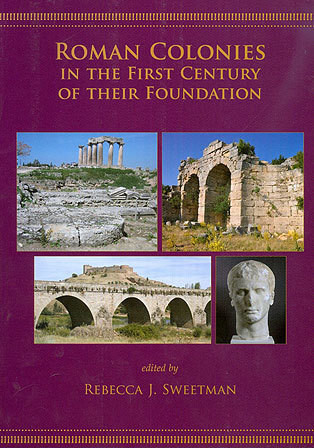
Format: Paperback
Pages: 128
ISBN: 9781842179741
Pub Date: 28 Feb 2011
Description:
Research on the nature of cultural change in the Roman Empire has traditionally been divided between the Western and Eastern provinces. Papers in this volume aim to reunite the provinces by approaching the question of cultural change across the Empire through a range of material culture and historical sources focusing on the first 100 years of the foundation of a colony.

Format: Hardback
Pages: 272
ISBN: 9781842174272
Pub Date: 26 Feb 2011
Illustrations: col illus throughout
Description:
The West Midlands is a region of geographical, topographical and geological contrasts, forming disparate landscapes that are reflected in the nature and diversity of its rich archaeology. This ranges from evidence of its prehistory to the important industrial heritage of its major conurbations. This book represents an attempt by the region's archaeologists to draw these varying archaeological landscapes together to produce a research framework and agenda for their future management.
This is based on a comprehensive evaluation of the archaeological resource and has allowed new research directions to be followed and gaps in our knowledge to be filled. The book is arranged chronologically, each chapter addressing the important themes identified within each period. The colour images illustrate different aspects of the archaeology of the West Midlands and also include a series of distribution maps produced from data held in the region's Sites and Monuments Records and Historic Environment Records. The research agenda is an invaluable tool not only for those interested or involved in the archaeology of the West Midlands but also for those working in other regions, adding another important piece to the archaeological jigsaw of the British Isles and helping us to see the archaeology of the West Midlands more prominently in its wider context.
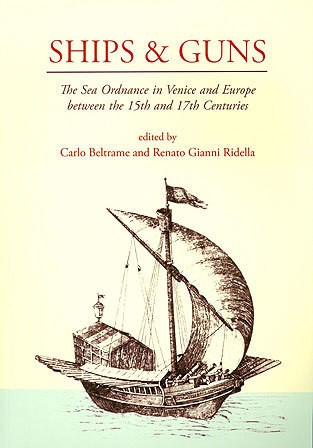
Format: Paperback
Pages: 168
ISBN: 9781842179697
Pub Date: 22 Feb 2011
Illustrations: b/w illus
Description:
Ships and Guns brings together experts from the field of historic artillery and underwater archaeologists to present a series of papers which focus on the development of naval ordnance in Europe and, especially, Venice, in the 15th17th centuries, as exemplified by the maritime archaeological resource. Subjects include Venetian ordnance in shipwrecks of the Mediterranean and Atlantic, the race to develop big calibres in the first war of Morea, Genoese ordnance aboard galleys in the 16th century, the strategic logistics of guns at sea during the Spanish armada of 1588 and ships and guns of the Tudor navy. Often specialists in ordnance study artefacts recovered from wrecks without a complete knowledge of the archaeological context from which they have been recovered.
Archaeologists investigating the context of the objects on the other hand, often do so with only a superficial knowledge of historic artillery. This volume hopes to redress the balance, and also to present a large amount of information, often concerning little-known wrecks, on this important but under-published subject area.

Format: Paperback
Pages: 176
ISBN: 9781842179871
Pub Date: 15 Feb 2011
Illustrations: b/w illus
Description:
Understanding the calendars used by ancient and medieval cultures is essential to the writing of history. Equally important, however, is understanding the basis upon which our current knowledge of these calendars rests. This second volume of Calendars and Years explores the calendars of ancient and medieval China, India, the ancient Jewish world, the medieval Islamic world, and the Maya.
Particular attention is given to the preserved evidence on which our understanding of these calendars lie, the modern historiography of their study, and the role of calendars in ancient and medieval society. Topics covered include the origin of the Chinese sexagenary cycle, evidence for the 364-day year in the ancient Jewish world, and the history of attempts to establish a correlation between Mayan dates and the Julian and Gregorian calendars. 176p, b/w illus (Oxbow Books 2011) Praise for Volume I: "Steele has assembled an essential foundation for the further study of calendariography and chronography in the ancient Near East and Egypt." Francesca Rochberg Journal for the History of Astronomy (November 2008) "It is a book from which there are absolute nuggets of incredible information to be mined." Peter A Clayton

Format: Paperback
Pages: 96
ISBN: 9782840482956
Pub Date: 15 Feb 2011
Illustrations: fully illustrated in colour throughout
Description:
This illustrated history presents a history of the Teutonic Order in the Middle Ages; its creation, its role in the Holy Land and on the shores of the Baltic Sea, its expansion in Prussia and the Baltic States. The Teutonic Knights were members of the order of the Teutonic Knights of the Hospital of the Blessed Virgin. They were a military-religious order of knights that restricted membership to Germans.
Part of the original Knight Hospitallers, under Hermann von Salza they split from the main branch and founded their own order, taking on a very distinctive white cloak bearing a stark black cross on the left shoulder. A very rich photo album, it includes images of documents, weapons, castles of the Order, with plans and beautiful colour photos of several current Order castles, including Marienburg. The battle of Tannenberg / Grunwald is also mentioned with great pictures of the reconstruction that was performed for the 150th anniversary of the Battle.

Format: Paperback
Pages: 80
ISBN: 9782352501237
Pub Date: 01 Feb 2011
Series: Men & Battles
Illustrations: fully illustrated throughout
Description:
The Romans had been at odds with the Gauls for a very long time indeed. Somewhere between 390 and 386 BC, a Senoni warchief called Brennus managed to capture Rome and ransom the city with his famous Vae Victis.The Urbs was then a city whose authority was only relative.
Nonetheless, the sack of Latium’s capital, highlighted by Livy in his History of Rome, helped to forge a centuries old loathing between the Romans, ashamed of being forced to capitulate to Brennus, and the Gauls, insolently proud of their triumph.The next step was part of the competition between the ‘Great Powers’ of that period. Independent Gaul was implicated in the global expansionist process of Roman might, which took place throughout the whole of the Mediterranean basin. Finally more pragmatically, Gaul merely became a political pawn in the hands of the triumvirs Pompey, Crassus and Caesar after they took over control of the Republic at the end of its decline, from the 60s BC onwards. It was therefore as a victim of what was at stake quite outside its control that Gaul so dramatically became part of Julius Caesar’s political strategy. Alesia was the final manifestation of this deep mistrust between two peoples.
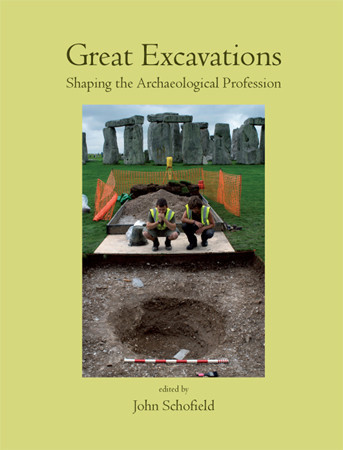
Format: Paperback
Pages: 368
ISBN: 9781842174098
Pub Date: 31 Jan 2011
Illustrations: 146 b/w and col illus
Description:
Great excavations inspire and capture the imagination of both the public and archaeologists alike; sites like Danebury, Sutton Hoo, Maiden Castle, Mucking and York conjure images of great discoveries and leaps in knowledge. But what was it like to participate in these excavations? What is the story of these projects, and what made them great?
This is a fascinating and entertaining retrospective documenting some of the seminal British excavations, assessing why they were so significant and why they persist in the memory and folklore of archaeologists today. It is also a social history of the profession and one that should stir memories and dispel (or corroborate) some urban myths that younger archaeologists may be aware of. An impressive list of authors and projects make this a significant contribution to the history and development of British archaeology over the course of the twentieth century. Fourteen chapters describe specific projects: Sutton Hoo, Birdoswald, Maiden Castle, Winchester, Owslebury, Danebury, The Breiddin, Wroxeter, Haddenham, Howe, York, Mucking, West Heslerton and Wharram Percy; six further chapters provide a thematic overview, covering early excavations, the IFA, English Heritage and the commercial sector. The world of archaeology has changed dramatically over the past twenty-five years, not least in becoming a profession. One of the clear messages of this book is the requirement for archaeology that great excavations continue in the future, to inspire another generation of archaeologists. The scope of archaeology may have changed, and the methodologies with it. The politics of excavation have changed too, with a more commercially driven and professional endeavour. But it is still, typically, the direct physical engagement with earth, artefacts, place and people (of the past and the present) that draws us in. This is why excavations matter, and why they can be great.

















